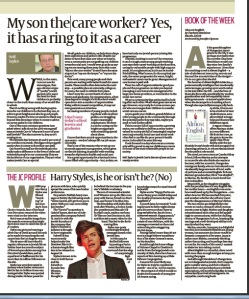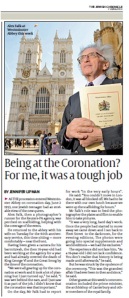With the final flight of Ethiopian olim, a chapter has closed; the question is now, how to engage Diaspora Jews without an identifiable example of Zionism in action.
After three hours of aimlessly wandering around Ben Gurion airport on a vain hunt for a blanket to stave off the icy air conditioning, having eaten the paltry sandwich offered by EasyJet as compensation for the lengthy delay, and having exhausted all of that day’s newspapers, I was reduced to gazing at the announcement screen in the hope that my flight might suddenly be ready to take off.
The list of destinations I saw – the obvious, like London and New York, and the more obscure, Yerevan, Bucharest, Antalya, Amman, Seoul – reflect to an extent the Jewish and the Israeli story. They tell of where we have come from, where we remain, and where we still wish to explore. Not least the inclusion of Addis Ababa, which recalls one of the most notorious journeys in Israeli history.
Almost 30 years have passed since Operation Moses, when thousands of Ethiopian Jews were brought to the Jewish state in a daring mission. Operation Solomon continued the journey of the Beta Israel, and subsequently, after much wrangling and controversy, the government authorized the emigration of the Falash Mura, on the proviso that they would convert to Judaism once in Israel.
The Jewish Agency has now declared that second mission to have concluded, greeting planes landing last week as the “end of the journey.” It is a decision many argue is premature, given that there are still those in Ethiopia who claim a right to Israeli citizenship. Whether or not the termination of the program is justified, it brings to an end a story that has captured the imagination of Jews around the world and connected them with the earliest concept of Zionism, the positing of Israel as the realization of a dream.
Growing up in the Diaspora and involved in a Jewish youth movement, we learned about Israel in terms of its politics and its wars, but also in the context of stories of its creation against the odds and of brave pioneers seeking a new start. The story of the Ethiopian Jews was one of the most resonant realities to connect us to the lofty words of Herzl and his counterparts. In the miraculous emigration of a whole community, happening in our lifetime, we saw Israel’s journey.
For those too young to have campaigned for the Refuseniks, and for whom the kibbutz seemed like a historical anachronism rather than a socialist paradigm, supporting initiatives like the Ethiopian bar mitzva fund or volunteering in absorption centers offered a tangible and powerful way to engage with the country’s past and present.
With the final flight, a chapter has closed. The Ethiopian community still faces serious and well-documented challenges, but it is nowadays as established as any other in the melting pot, achieving in every walk of life, from politics to the arts, sport and science (and latterly, Miss Israel). The most recent arrivals will, it is to be hoped, follow suit.
So what now? For though there remain tiny outposts of Jews around the world who look to Israel as the Ethiopians did, or survive in inhospitable environs, it is hard to conceive of another comparable aliyah operation occurring in the future. Indeed, as positive as those operations were, we should hardly crave further cases of communities fleeing to Israel. The question is now, how to engage Diaspora Jews without an identifiable example of Zionism in action. After all, for the next generation, the miraculous airlift of the Beta Israel and the more complex journey of the Falash Mura will be as distant as any of Israel’s early struggles.
Some make the case that Israel can no longer offer such inspirational examples, comporting itself shamefully towards African asylum seekers and its minority citizens, or with the aggression shown by some haredim towards women. And indeed from a Diaspora vantage point, the intolerant rhetoric that characterizes too much debate in Israel is almost impossible to comprehend – yet Israelis are hardly homogenous in their views and there are countless individuals fighting to make a difference and live up to what the architects of independence promised.
Certainly, there is no call for a crass PR exercise that glosses over any unsavory realities to inspire Diaspora Jews; that Israel has acted heroically in one area should never be used to overlook the occasions when it falls short. Yet that should not negate the fact that there are still breakthroughs, still moments when you realize how young the country is and how far it has come. The UEFA U21 tournament in Israel; a small event in international sporting perhaps, but it would once have been unthinkable. On gay rights Israel remains a beacon in the Middle East; likewise in academia, science, technology, there are many heroes (as the Nobel Prize balance sheet proves repeatedly), even if they are not airlifting a population. Israel’s speed at offering aid after humanitarian crisis should not be forgotten; neither should the resilience of its people. And there are still miracles to hope for; most importantly the carving of a peace with the Palestinians that too often seems as improbable as the early visions of a Jewish homeland.
Diaspora Jews may have no dearth of issues to engage with, such is the strength of the BDS campaign, and they can and do engage with countless standalone campaigns, from publicizing Gilad Schalit’s plight to petitioning the IOC on a commemorative silence for the Munich victims. But for Jews outside Israel to care about the country – not as knee-jerk advocates who reject all criticism as antisemitism, but as supporters with an investment in a future that makes good on its lofty origins – there needs to be a connection with Israel’s wider story, a way to understand Zionism as more than a political slur.
As we move to a new year – Israel’s 65th Rosh Hashana – the challenge is for Israel to continue producing inspiring stories and for those of us in the Diaspora to continue telling them.
This piece originally appeared on The Jerusalem Post. Read the original here.





 He’s not yet two days old, only weighs 3.8 kg and doesn’t even have a name. Yet Baby Cambridge, third in line to the throne and pronounced beautiful by his doctor, is currently occupying the world’s attention. Kate, it seems, has done her job.
He’s not yet two days old, only weighs 3.8 kg and doesn’t even have a name. Yet Baby Cambridge, third in line to the throne and pronounced beautiful by his doctor, is currently occupying the world’s attention. Kate, it seems, has done her job. The exhibition, which brings together 85 iconic outfits along with accessories, looks at “the creative explosion of London fashion in the 1980″. It’s a whirlwind tour of how key designers interpreted the trends of the time – including loud, garish prints, unforgiving knitwear and androgyny – and how fashion was an inherent part of the burgeoning underground club scene, with design schools deserted on Fridays as students rushed to create thrilling, subversive outfits for the weekend.Interspersed with the outfits are photographs and videos (look for a glimpse of a young Daniel Day-Lewis in one clip), a darkened “club area” showing footage from 1980s clubs, and copies of magazines like The Face that lived and
The exhibition, which brings together 85 iconic outfits along with accessories, looks at “the creative explosion of London fashion in the 1980″. It’s a whirlwind tour of how key designers interpreted the trends of the time – including loud, garish prints, unforgiving knitwear and androgyny – and how fashion was an inherent part of the burgeoning underground club scene, with design schools deserted on Fridays as students rushed to create thrilling, subversive outfits for the weekend.Interspersed with the outfits are photographs and videos (look for a glimpse of a young Daniel Day-Lewis in one clip), a darkened “club area” showing footage from 1980s clubs, and copies of magazines like The Face that lived and
